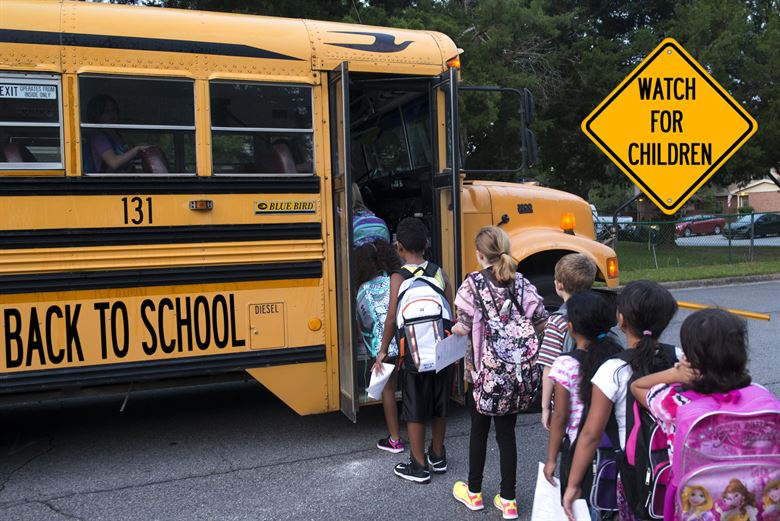As the school year begins and we approach the holiday season, we also approach National School Bus Safety Week, a week-long event hosted by the National Association for Pupil Transport that aims to promote school bus safety.
As a parent or guardian, your child’s well-being is paramount and school bus safety is a shared responsibility that involves not only school staff but also parents, students, and the community at large. Continue reading to learn more about essential school bus safety tips to keep in mind during this National School Bus Safety Week and throughout the year.
Arrive at the Bus Stop Early
Always attempt to get to the bus stop at least five minutes before the scheduled pickup time or earlier, if possible. Getting the bus stop early will allow your child to board the bus safely, without any rushing or potential accidents. Plus, getting to the bus stop early may mean your child is able to sit in their favorite spot on the bus!
Keep a Safe Distance from the Bus
Stand at least six feet away from the curb while waiting for the school bus. Creating a sizable amount of space provides a buffer zone to prevent accidents when the bus approaches as well as gives the bus driver ample space to maneuver.
Line Up in a Single File
Standing in a group can lead to disagreements about who’s first, who’s next and can result in someone missing in the bus! Instruct children to form a single-file line at the bus stop. Doing so can allow the bus driver to see and count all the students, ensuring no one is left behind.
Wait Patiently and Approach with Caution
Teach your child to wait patiently for the bus to come to a complete stop before attempting to board. Rushing onto the bus can lead to slips and falls and serious injuries for your little ones.
Use Handrails
Once on the bus, remind your child to use the handrails while climbing up and down the steps. Your child should take their time climbing each step and avoid wearing overly long pants, skirts and dresses to prevent tripping.
Report Bullying and Unsafe Behavior
Empower your child to speak up if they witness bullying or unsafe behavior on the bus, including unsafe behaviors by the bus driver. “Those in charge of public and private buses have a legal responsibility to keep passengers safe,” note bus accident attorneys from St. Louis firm The Floyd Law Firm, “They must follow state and federal safety laws in terms of the bus drivers they hire, bus driver training, and bus maintenance.” Encourage open communication with both you and school authorities.
Find a Seat
Encourage your child to find a seat promptly and remain seated throughout the bus ride. Rowdy behavior or moving around the bus during the trip can distract the bus driver and jeopardize everyone’s safety.
Keep Aisles Clear
Keeping backpacks, lunchboxes, and other belongings out of the bus aisles to prevent serious injuries. Clear aisles can also help passengers exit quickly in case of an emergency.
Respect the Driver
Teach your child to show respect and consideration to the bus driver. A positive relationship with the driver can contribute to a safe and pleasant ride for everyone onboard.
Be Aware of Surroundings
Encourage your child to be aware of their surroundings when exiting the bus. Pedestrians should wait for the driver’s signal before crossing the road and make eye contact with the driver to ensure they are seen.
Bus Safety is Everyone’s Duty
National School Bus Safety Week is an important opportunity to review school bus safety for yourself and your children. While it is a week-long event, school bus safety should be a year-round commitment for everyone involved in the school bus transportation system. By working together as a community, we can ensure that every child’s journey to and from school is a safe and secure one!





No Comment